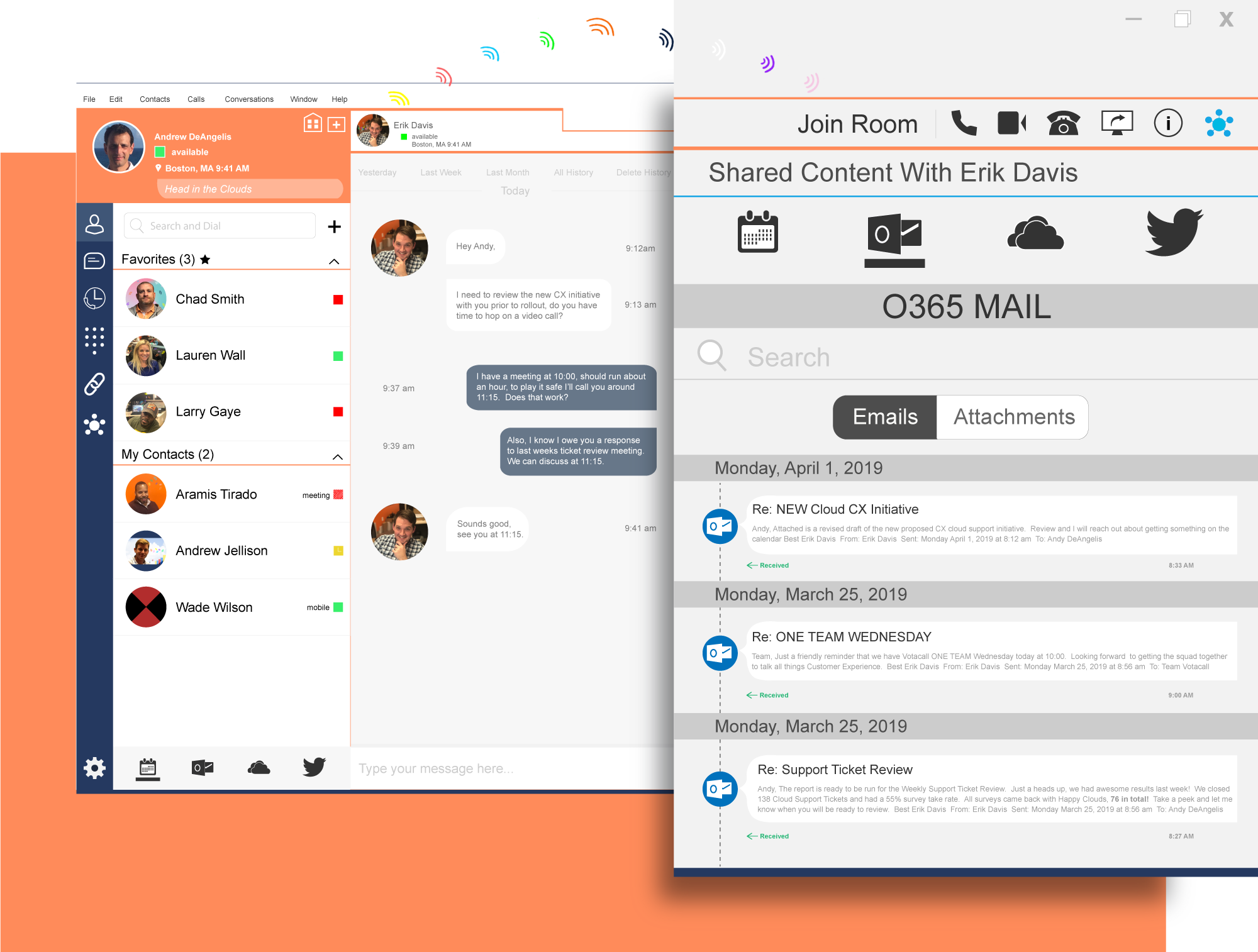Platform
Call Center
Get Started
Wanna subscribe to our blog?
Get updates once a month.
Platform
Call Center
Solutions
Get Started
Wanna subscribe to our blog?
We'll send you updates once a month.
Wanna subscribe to our blog?
Get updates once a month.
Wanna subscribe to our blog?
We'll send you updates once a month.

Let's talk about communication overload.
I know, it's a little weird for a communications company to talk about the its' dangers, but it's a real thing. And it isn't just a minor inconvenience - it can seriously sidetrack even the most focused employees.
Think about how many different ways you communicate with your coworkers. At a minimum, you're sending emails, sharing files, and using instant messages. Depending on your role and the size of your company, you may use the phone a good amount too.
That's a lot to keep track of. Between keeping an eye on your inbox, checking your messages, and managing shared files, collaborating in today's workplace can be extremely time-consuming.
Obviously, effective communication is important. But there's a difference between having valuable workplace interactions and feeling like you constantly need to check things just to keep up.
Unified Communications as a Service (UCaaS) refers to cloud-based platforms that integrate multiple workplace communication channels. The "as a service" component means that the applications are managed by the service provider and delivered to end users in exchange for licensing fee.
Let me put that a simpler way.
Think back to your typical day at work. Wouldn't it be nice if you could make calls, send emails, have video meetings, and access shared files all using one app?
 UCaaS puts everything in one place.
UCaaS puts everything in one place.
UCaaS allows you to do just that. It's technology that's designed to save you time, as well as reduce the stress of constantly monitoring the information coming your way.
We waste a lot of time at work. Consistently checking email and IM isn't just distracting in the moment - having several of those apps constantly running in the background makes it harder to unplug from them and do focused, uninterrupted work.
A recent study by RescueTime found that the average knowledge worker "checks in" to email or IM every 6 minutes. They also found that in today's workplace, 40% of workers can get a maximum of 30 minutes of focused work done before checking communication channels.
In other words, we've become a little obsessive about making sure we're getting back to people instantly, even though the need usually isn't that urgent.
 There's always an Office gif.
There's always an Office gif.
Don't get me wrong - effective communication and collaboration are important. Our ability to share useful information with each other quickly has been a huge positive for the workplace.
The problem is, we have so much information coming at us that it can feel like we're bound to miss something important. That's why having a centralized place for it can provide some peace of mind and make it easier to unplug for a bit.
The idea of moving communications to the cloud isn't new. It started with hosted VoIP, which allows businesses to move their phone systems to the cloud. Doing so helps them improve reliability, give employees some flexibility, and gain more control over their costs. Since then, tools like Slack have emerged to help companies communicate in real-time, and only pay for the users they need.
The benefits of Unified Communications as a Service are similar to most cloud delivery models. By adopting a UCaaS platform, businesses can swap the investments they make in costly on-premise infrastructure for a simple service fee, and know that the platform will be managed by their vendor.
This typically lowers overhead, makes it easier to budget, and allows your IT team to focus on more pressing issues like network security. Once you pick a provider, you can also ask them to simply add or remove users based on what your business needs at the time.
Unified Communications as a Service has become a popular phrase in the IT space for a reason. When deployed correctly, it makes internal communication a LOT easier for employees and frees them up to do more focused, uninterrupted work.
For companies, moving to a UCaaS platform is a great way to consolidate costs, make things easier for IT teams, and improve overall employee productivity.
These Stories on Unified Communications
No Comments Yet
Let us know what you think